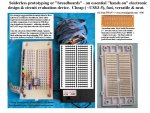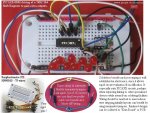Hi everyone.
I'm just learning electronics, (series/parallel resistors stage), and I'm trying different ways to learn as I'm completely on my own. I've got the 'PICAXE'-28X1 as it looks like another learning tool that might help. I've briefly looked at the starter pack and its made me want to get going. C an anyone with experience tell me that I am going too fast and need to learn more of the basics, (which I'm doing anyway), before using picaxe, or would picaxe use help me a lot better now. I don't want to snow myself under with too much and too quick. I'd be grateful for any advice. Thank you. http://www.picaxeforum.co.uk/images/smilies/rolleyes.gif
an anyone with experience tell me that I am going too fast and need to learn more of the basics, (which I'm doing anyway), before using picaxe, or would picaxe use help me a lot better now. I don't want to snow myself under with too much and too quick. I'd be grateful for any advice. Thank you. http://www.picaxeforum.co.uk/images/smilies/rolleyes.gif

I'm just learning electronics, (series/parallel resistors stage), and I'm trying different ways to learn as I'm completely on my own. I've got the 'PICAXE'-28X1 as it looks like another learning tool that might help. I've briefly looked at the starter pack and its made me want to get going. C


